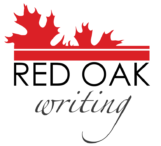 Guest blogpost from Jennifer Rupp (who writes as Jennifer Trethewey, author of the Highlanders of Balforss Series)
Guest blogpost from Jennifer Rupp (who writes as Jennifer Trethewey, author of the Highlanders of Balforss Series)
I took the Fred Shafer 4-part series on Paragraphs (of all things) presented by the Off Campus Writers’ Workshop. If I can take away 1 or 2 new and significant concepts from a writing workshop, I consider it time well spent. Fred imparted a host of new ways of writing and, even more importantly, editing. Needless to say, I was impressed. I can’t possibly pass on all twelve hours of his wisdom, but I can share a few things that truly resonated with me.
First and foremost, Shafer said that too often writers bail from a paragraph before they have discovered everything. I do that. I’ll lay down some internal thought but never poke it and prod it enough to find the best and juiciest bits. I just go on to the next thing, eager to keep the pace, to keep the story rolling. But I think this lack of exploration is why many editors say my writing isn’t deeply emotional enough for them. I’ve gone back to the beginning of my first draft and started looking at each paragraph, searching for what is missing, for what I left in my head instead of on the page. I need to learn to recognize when I’m stopping too soon.
In terms of length, variety was something Shafer stressed and not for variety’s sake but for the sake of impact, pace, depth, and process. Each writer will have their own default length. Mine seems to be 5 lines. Any more than that and I start to worry that I need more white space on the page. Ridiculous. Where did I get that idea?
Think of a paragraph as a container, or a limited space to work on the shapes and rhythms of your sentences. Shafer likes using the word shape rather than construction because it’s more about molding, shaping. How you mold your paragraphs will impact the voice of your narrative/characters. Vary the length of your paragraphs as you would your sentences. Fragments are great, use them with purpose to emphasize or slow things down (I always thought short sentences implied action or urgency—not always so).
This blew me away: Shafer said the rhythms of sentences and paragraphs may be the chief reason why manuscripts are accepted. Rhythm is important because it suggests movement and movement is change, change of events, thoughts, emotions. Paragraphs can be used to build outcomes but they won’t be successful unless you have pleasing and effective movement between sentences using variations of lengths, shapes, and rhythms. Shafer quoted Gertrude Stein: Sentences don’t contain emotion, paragraphs do. Now, why didn’t I think of that? It’s not the one sentence that will grab a reader by the heart, it’s the chain of sentences that build to that one sentence.
Shafer teaches through example using excerpts from all genres written by well-known authors as well as his unpublished students. If I were asked to critique these samples without knowing who’d written them, I’d be crossing out filter words and adverbs, suggesting stronger verbs, hinting at combining sentences or breaking up sentences and all that kind of standard critique stuff. In doing so, however, I would have thrown off the rhythms, ruined the well-crafted cadence, and stepped on the delicate voice of the piece that made it a joy to read. Yeah, a novel full of filters words and adverbs would be a drag, but if you are using words with purpose, if you are shaping the sentences and finding the rhythms, then trust the music inside you. You know what the rhythms should be.
 Jennifer Trethewey writes sexy, sweeping, historical romance full of adventure and Highland heartthrobs. The four novels in the Highlanders of Balforss series, TYING THE SCOT, BETTING THE SCOT, FORGETTING THE SCOT, and SAVING THE SCOT, are available in eBook, print-on-demand, and audio formats on Amazon.com.
Jennifer Trethewey writes sexy, sweeping, historical romance full of adventure and Highland heartthrobs. The four novels in the Highlanders of Balforss series, TYING THE SCOT, BETTING THE SCOT, FORGETTING THE SCOT, and SAVING THE SCOT, are available in eBook, print-on-demand, and audio formats on Amazon.com.
